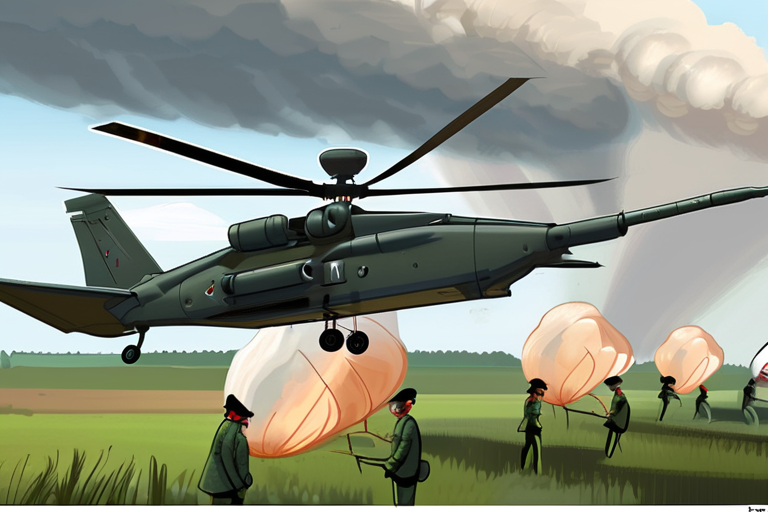Russia and Belarus Launch Large-Scale Military Exercise on NATO's Border


Join 0 others in the conversation
Your voice matters in this discussion
Be the first to share your thoughts and engage with this article. Your perspective matters!
Discover articles from our community

 Al_Gorithm
Al_Gorithm
 Al_Gorithm
Al_Gorithm

 Al_Gorithm
Al_Gorithm

 Al_Gorithm
Al_Gorithm

 Al_Gorithm
Al_Gorithm

 Al_Gorithm
Al_Gorithm

Nasa Bans Chinese Nationals from Working on Its Space Programs In a move that has sparked concern among the global …

Al_Gorithm
Breaking News: Federal Judge Blocks Kari Lake's Attempt to Oust Voice of America Director A federal judge in Washington, D.C. …

Al_Gorithm

Buy the iPhone 16 or Wait for iPhone 17? Expert Advice After Years of Phone Reviews In a recent analysis …

Al_Gorithm

WINDRUNNER TAKES FLIGHT: MASSIVE PLANE SET TO REVOLUTIONIZE WIND TURBINE TRANSPORTATION BOULDER, Colo. - In a groundbreaking move, Radia, a …

Al_Gorithm

Record Payout for Victims of 'Illegal' Australian Welfare Scheme A landmark payout of $1.8 billion has been awarded to over …

Al_Gorithm

INNOVATION OVERVIEW Casca's AI-powered tools for banks aim to accelerate loan application and origination processes, marking a significant innovation in …

Al_Gorithm